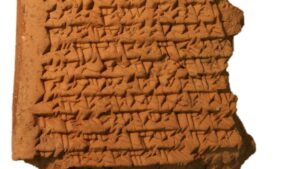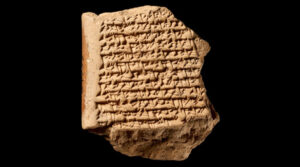The Babylonian tablet is suspected of being the oldest example of the use of applied geometry
In this document https://argoprep.com/blog/k8/go-math-grade-4-vs-argoprep-grade-4-workbooks/, Pythagorean triples might have been used a thousand years before Pythagoras
Evidence has been found on a Babylonian tablet that the ancient inhabitants of Mesopotamia knew the basics of trigonometry a thousand years before Pythagoras, that is, 3,700 years ago. The results of the study were published by the scientific journal Foundations of Science.
“The tablet https://argoprep.com/blog/k8/go-math-grade-5-vs-argoprep/ is a cadastral document from the Old Babylonian period that contains a legal and geometric description of the field, which was divided into several parts after it was sold,” said the study’s author, Daniel Mansfield.
Ancient Mesopotamia is considered one of the first hotbeds of scientific development. The inhabitants of this region invented writing, created the basics of law, mathematics and astronomy. Their writings were later developed by Pythagoras and other ancient Greek scientists, who are considered the founders of geometry, philosophy, and other sciences.
Mansfield found further evidence that Mesopotamian achievements were greatly underestimated: https://argoprep.com/blog/k8/go-math-grade-6-vs-argoprep/. He studied the Si.427 tablet, which French archaeologists found in central Iraq in the late 19th century. The text on it described a certain field that its conflicting owners, a wealthy man and a woman, were trying to divide into two parts.
The mathematician believes that he figured out the purpose of this document and unraveled the meaning of the numbers written on it thanks to another tablet, Plimpton 322, which he studied five years ago. It was covered with figures, which the mathematician then assumed represented the first trigonometric table in history.
Later the researcher noticed that the values found in the descriptions of the different parts of the field on the Si.427 plate coincided with the figures in Plimpton 322. These values represented the so-called “Pythagorean triples” – sets of integers that could be the sides of a right triangle.
Such a coincidence suggested to Mansfield that the second tablet was a kind of cheat sheet: it helped scribes determine the geometric shape of fields and calculate their area by dividing them into triangles. The scholar suggests that it appeared after the appearance of private property in Mesopotamia, as a result of which the authorities had to constantly face the problem of measuring the area of arable land.
“Trigonometry is believed to have been invented in the second century B.C. by ancient Greek astronomers. Analysis of this tablet shows that the Babylonians were ahead of them,” the mathematician explained.
The trigonometry of the Babylonians differs both from the mathematics of the ancient Greeks and from modern science, which is based on sines, cosines and other operations with the angles of triangles and other geometric figures, rather than on Pythagorean triples, rectangles and the hexadecimal notation system.
Mansfield is now studying photographs of clay tablets of the time in hopes of finding other examples of how the inhabitants of ancient Babylon used this bizarre form of mathematics. The scientist hopes that this search will not only help to confirm his theory, but also to clarify the meaning of some combinations of numbers on the tablet Si.427, the meaning of which remains a mystery so far.